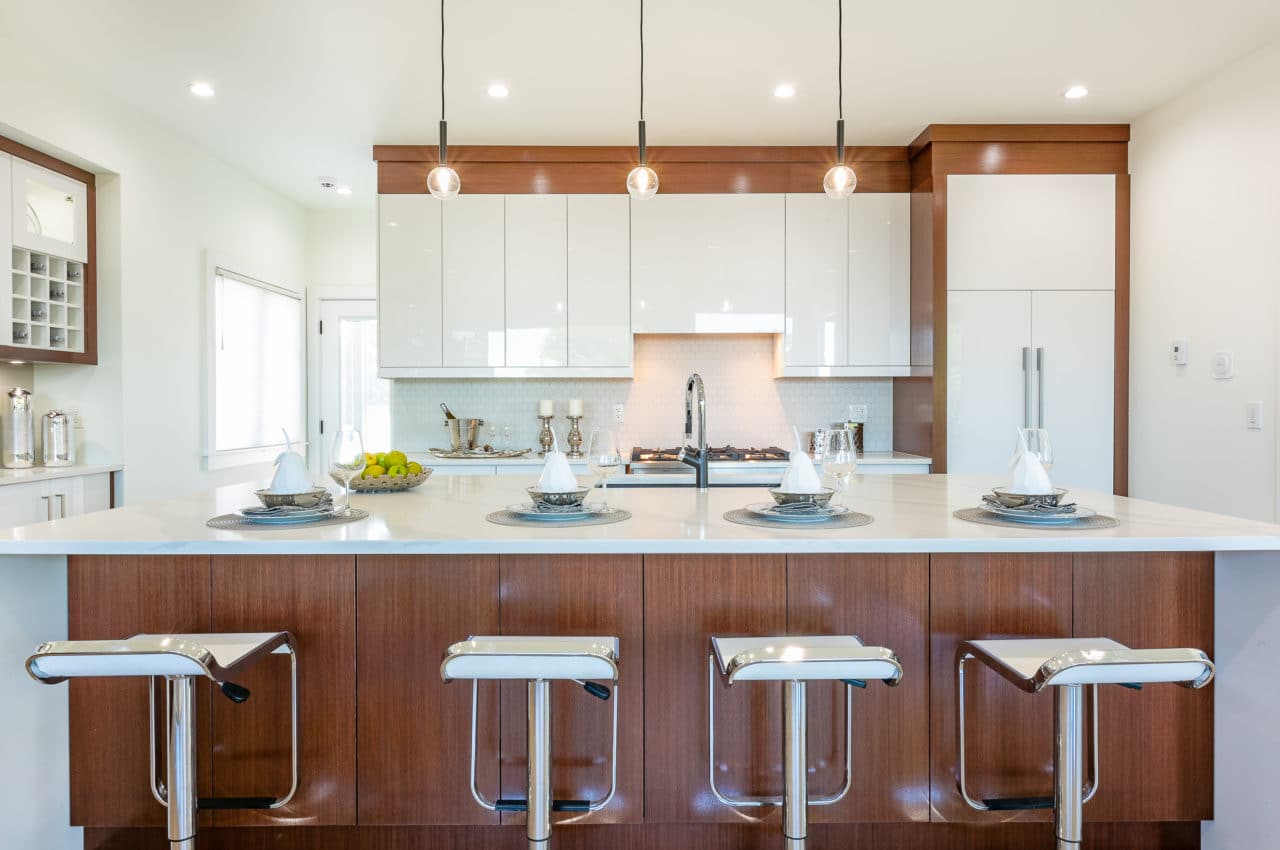Picture this: you’ve just finished redecorating your home, and everything is perfect. The furniture is arranged just the way you want it, the walls are newly painted, and the drapes are hung. But something’s missing…interior lighting!
Light plays a few important roles in our homes: personality, warmth, and function. But where do you start? This complete guide will give you all the information you need to start interior lighting design for your home!
Types of interior lighting
Understanding the different types of light is a great place to begin when you’re planning your home’s interior lighting design. There are four main ways to light a space, and each type of light has a different purpose:
Overhead Lights
Overhead lights are typically used as general lighting for a room. They provide wide illumination and are perfect for everyday tasks like cooking or doing laundry.
Accent Lights
Accent lights are used to highlight specific features in a room, like art pieces or architectural features.
Task Lights
Task lights are meant for…well, tasks! They provide focused illumination for activities like reading, writing, or working on a computer.
Natural Light
Natural light is always the best type of light! It is free and provides a softer and more flattering light than artificial light fixtures. Plus, getting some sun is good for your mood and Vitamin D levels!
Light fixture options
There are countless types and styles of light fixtures to choose from. To narrow it down, start by considering the function of the fixture and the overall look you’re going for in the space.
For example, a simple flush mount light would be a great option if you need a general overhead light for your kitchen. But if you’re looking for something with more personality, you could opt for a chandelier or pendant lights.
The most common types of light fixtures are:
Chandelier
A classic choice for overhead lighting, especially in spaces with higher ceilings. From fancy and formal to fun and whimsical, there’s a chandelier to match any style.
Pendant lights
A great option for task lighting and accent lighting. Pendant lights come in a wide range of styles, from sleek and modern to rustic and industrial.
Flush mount lights
A popular choice for general overhead lighting. These are placed close to the ceiling, making them perfect for lower ceilings.
Recessed lights
A versatile type of light can be used for general overhead, accent, or task lighting in any type of space. These are placed into the ceiling, so they’re perfect for a more streamlined look.
Sconces
A classic wall-mounted sconce light can be used for accent, task, or general lighting in any space. Sconces come in a wide range of styles, from traditional to contemporary.
Table lamps and floor lamps
Another popular choice for task lighting and accent lighting. Beyond light, they can be used to add a pop of color or pattern to space and come in a wide range of styles.
Track lighting
Often used for general lighting, accent lighting, or task lighting. Track lighting sits on the ceiling and consists of multiple lights that can be directed to different areas.
Choosing the right lighting for each room
Not all rooms are created equal, and that means they won’t all require the same types or amount of light. To figure out how to best light each room in your home, start by considering the purpose of the space and the types of activities that take place there:
Living room
The living room is a multifunctional space used for everything from watching TV to entertaining guests. So it should be well-lit with a mix of different types of light.
General overhead lighting, such as a chandelier or flush mount light, is always a good place to start. Then, add a few tables or floor lamps for the task and accent lighting.
Bedrooms
The bedroom is a place to relax and unwind, so you’ll want to keep the lighting soft and flattering. A ceiling fan with a light or a flush mount light are both good choices for overhead lighting. Then, add a few tables or floor lamps for task lighting and accents.
Bathrooms
Bathrooms typically need bright, clear light for applying makeup, doing hair, and so on. A flush mount light or recessed lights are good choices for overhead lighting. Then, add task lights around the mirror for a clear view.
Depending on the size of your bathroom, you may need light near the shower and tub. Lights with exhaust fans and Bluetooth speakers are popular for bathroom lighting since they serve multiple purposes.
Kitchen
The kitchen is a place where you’ll need bright, clear light for cooking and prep work. LED lights, recessed lights, or a flush mount light tend to work well for your overhead lighting. Then, add in task lights under cabinets and over the sink and stove.
Dining area
You may want a range of light in your dining area from breakfast to dinner. Getting energized over coffee in the morning might require a different light than a romantic dinner for two.
For overhead lighting, a chandelier is typically a good choice. Then, add in accent lights like wall sconces. Even candles can be used to add a touch of ambiance to your dining area.
And for each room, dimmer switches are a nice addition so that you can adjust the light to suit your needs.
How to choose the right light bulbs
At this point, you know what kind of lighting you need and where it should go, but what about the light bulbs? There are four types of light bulbs on the market, each with a unique lifespan and function:
1. Incandescent
- Most common
- Emit a warm light
- Not as energy-efficient
- Relatively inexpensive
2. LED
- Long lifespan (sometimes up to 100,000 hours!)
- Use less energy
- More expensive initially but saves money in the long run
3. Halogen
- Affordable
- Emit a bright light
- Not as energy-efficient
- Shorter lifespan than LEDs
4. Fluorescent
- Inexpensive
- Emit a bright light
- Not as energy-efficient
- Shorter lifespan
- Harsh on eyes
There are a few things you’ll want to keep in mind when choosing light bulbs:
Wattage
This is how much power the light bulb uses and is typically indicated by a number followed by the letter “w.” The higher the wattage, the more power the light bulb uses and the brighter it will be.
Lumens
This measures how much light an LED bulb emits and is indicated by a number followed by the letters “lm.” The higher the lumens, the brighter the light.
Color temperature
This is measured in degrees Kelvin and indicates whether a light bulb gives off a warm or cool light. A lower number means a warmer, more orange-tone light, while a higher number means a cooler, blue-tone light.
Light appearance
This is how the light looks when it’s on and is indicated by a number followed by the letters “k.” The lower the number, the warmer the light will appear. For example, 2,000K will look like warm fire light, while 6,500K will be the brightest daylight.
Professional interior lighting installation
Now it’s time to get started on your interior lighting project! If you need help with installation or electrical work, be sure to call Lee Company. Our qualified electricians will be happy to help you create the perfect lighting for your home. Safe and beautiful lighting is just a phone call away!
Ready to upgrade your interior lighting?
CALL US NOW AT 615.567.1000

